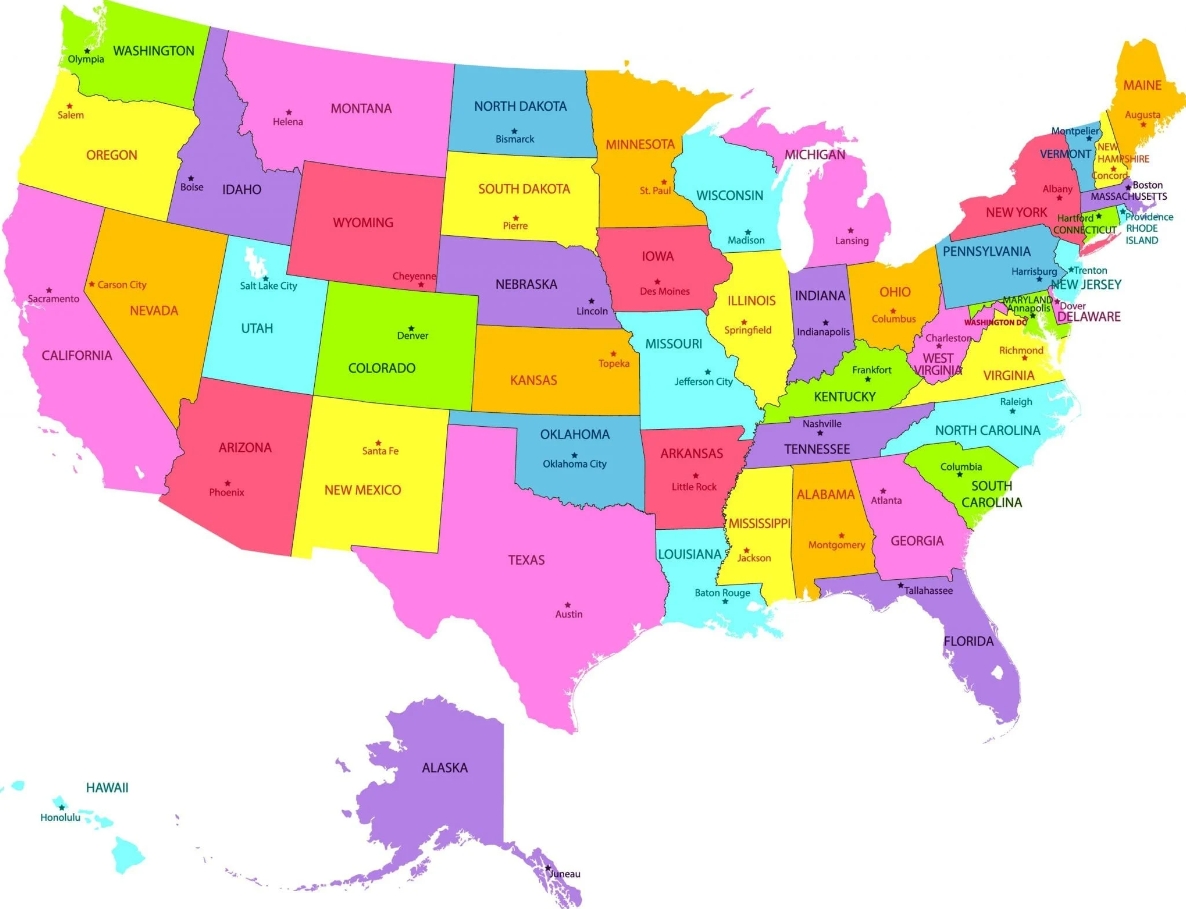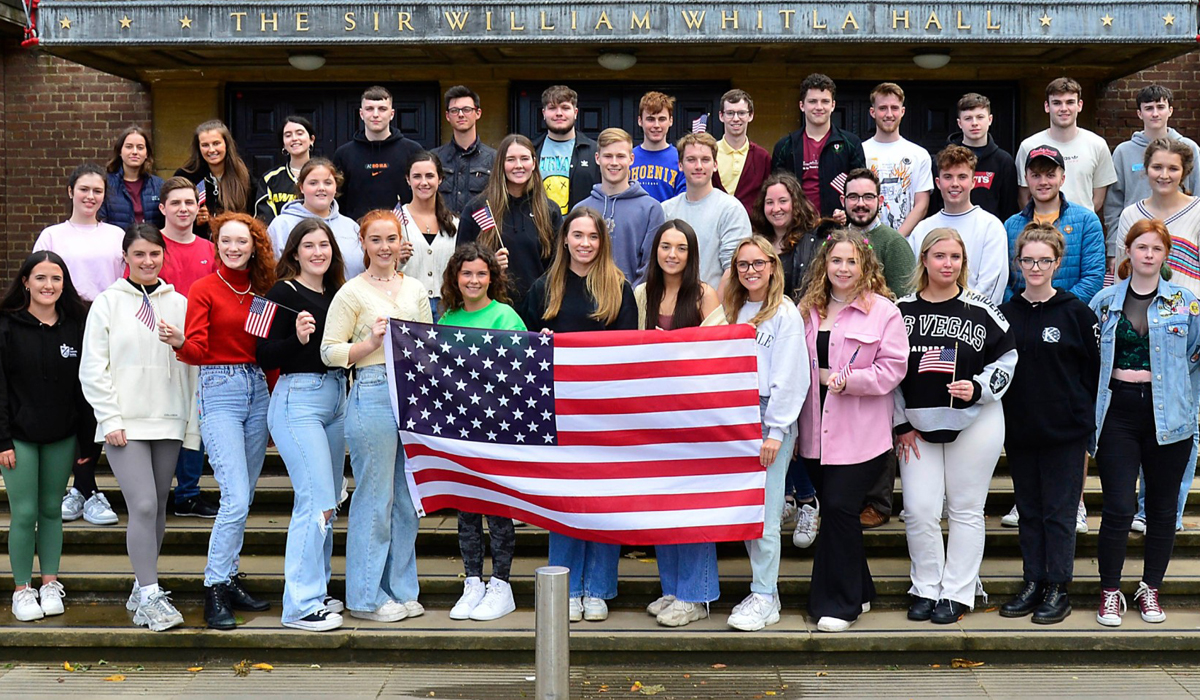Study in USA
About USA:
The United States, higher education system is made up of close to 4,000 authorized schools. In contrast to many other nations, American higher education institutions are accredited on a national or regional level by independent accrediting bodies.
Higher education degrees are offered by several sorts of institutions. For instance, liberal arts colleges provide courses in the humanities, social sciences, languages, and the arts. Institutions that specialize on liberal arts are often private. Endowments, alumni gifts, research grants, and tuition fees are used to pay for private colleges and universities. Private colleges and universities might be single-sex or have a religious affiliation. They are often smaller than public institutions.

Fast Facts:
⇒ The United States is thought to offer the best higher education in the world, particularly in the area of technology. The globe accepts American degrees, which are regarded as some of the most prestigious.
⇒ The US is the best country to live and work if research is your passion. Every discipline has a variety of research options that let students obtain real-world experience while they are studying. Also, students who serve as research assistants frequently receive a waiver of tuition costs and are given a stipend to help with their living expenses thanks to financing from the U.S. government and public and private organizations.
⇒ Students frequently have the choice to take classes (referred to as “electives”) in other subject areas, depending on their interests, in addition to their major field of study and courses. Also, most schools and universities provide a very broad and varied array of course options. Sometimes, as part of their degree program, students may even be able to “cross-register” or take classes at other local colleges.

⇒ International students may occasionally receive financial support. Most universities offer financial aid to international students in the form of research or teaching assistantships. Instead of being based on necessity, these assistantships are awarded on the basis of academic merit. Students who are selected will receive stipends and/or full or partial tuition waivers. In some instances, a student’s education might end up being entirely free if they demonstrate remarkable talent in their subject of study. Also, there are numerous organizations that offer grants, loans, and scholarships to students.
⇒ The majority of schools and universities permit foreign students to work on their campuses part-time. Students with F-1 student visas are permitted to work up to 20 hours per week on campus during the academic year and up to 40 hours per week during the summer or breaks. The hourly wages of the students, which typically range from US$ 8.00 to US$ 15.00 per hour, go toward paying for their living expenses. Based on their financial needs, as well as their individual abilities and expertise, students are assigned to occupations. One with a lifeguard certification might be sent to the campus Aquatic Center, whilst an English major might be assigned to the university library.
⇒ During the summer break, students are permitted to work as interns in their respective academic subjects outside from the university. During the academic year, internship opportunities are also available. Internships are an important component of education since they allow students to get real-world experience while still in school. The majority of colleges and universities now grant academic credit for internship experience.
⇒ Students are permitted to work full-time for a year in a related field after receiving their degrees in order to obtain experience. (Students in several disciplines may extend this to 17 months as of 2008) The Optional Practical Training (OPT) program is what this initiative is known as. After completing their OPT period, many gifted students are recruited permanently by getting sponsorship from their companies for an H-1 visa. Foreign nationals can temporarily work in specialty occupations including software development, engineering, teaching, accounting, or marketing with the H-1B visa. After the approval of the status modification, students may continue working without leaving the United States.
⇒ Almost all U.S. colleges and universities have an office for international students with advisers that offer exceptional support to international students to aid them in navigating the occasionally complex immigration and university systems and making the most of their academic experience. These offices frequently arrange activities and workshops to assist international students meet other students and get active in campus life, in addition to providing immigration and academic counseling.
⇒ International students have the opportunity to connect with and learn from students from a wide range of nations, diverse religions, cultures, economic backgrounds, and ethnicities in addition to what is taught in the classroom. Many overseas students may find this experience eye-opening and beneficial in developing into truly global citizens.
⇒ Any student’s degree of commitment and effort will directly correlate with how well they do in school. Unquestionably, education in the United States is of the highest caliber. Learning in American institutions can be a rich and distinctive experience due to the diversity of talents and cross-cultural settings. With such a wide range of academic and cultural backgrounds, foreign students are better equipped to work anywhere in the world without any difficulty.
Universities:
Some of the top-ranked Universities of the USA are:
| Massachusetts Institute of Technology (MIT) | Stanford University | Harvard University |
| California Institute of Technology (Caltech) | University of Chicago | The University of Pennsylvania |
| Princeton University | Yale University | Cornell University |
| Columbia University | Johns Hopkins University | University of Michigan-Ann Arbor |
| University of California Berkeley (UCB) | Northwestern University | New York University (NYU) |
Education System
American educational system
The university experience in the United States is unique. Undergraduate and graduate students from all over the world have access to a wide choice of study opportunities in this country, which is home to renowned universities and distinctive specialty institutes.
How it works?
Higher education in the US is divided into three main types of institutions:
Junior or community colleges
Community colleges provide two-year associate degrees and are a cost-effective option. You can complete an undergraduate degree by enrolling in a university for two more years after you graduate.
Vocational schools
For students interested in practical education and employment training, vocational institutions are an excellent option. To prepare you for work in professions like dental hygienist, civil engineer, chef, or many other ones that do not require a degree but do require training, they offer very short, career-focused programs.
Universities
The liberal arts and sciences paradigm is the foundation of undergraduate education in the US. A bachelor’s degree can be earned by students who have earned a certain amount of credits in their chosen major field of study, along with credits in a wide range of other courses.
The two main types of universities in the US are:
» Public universities are mostly state universities. These were established and continue to be run by the state government
» Private universities are a mix of profit and not-for-profit; approximately 20% of students attend private universities.
Graduate Schools
In other countries, graduate schools are often referred to as postgraduate institutions. Often, graduate programs are connected to a university that also confers bachelor’s degrees on undergraduates. These institutions grant master’s and doctoral degrees.
In the US, master’s and doctorate programs are the two main subcategories.
• There are numerous specializations for master’s programs in the US, and there are two main course types: academic and professional.
• A doctorate is the highest degree that may be earned in the US. A doctoral degree requires its students to complete an original piece of research. In the US, doctoral candidates are still expected to complete courses and written exams in addition to their research.

Academic Year
Most universities and colleges typically are open from August to December and from January to April. Between May and August, a range of summer school courses are also available.
Undergraduate degrees can be earned in three or four years, depending on the university. Typically, master’s programs last one to two years.
Doctorate or PhD programs typically last four to seven years, which is a little longer than in other nations. A typical doctoral degree comprises numerous phases, including coursework, qualifying tests, and finally doctoral candidacy, during which time candidates concentrate on their dissertation.

Teaching and learning style
Colleges in the US place a high value on diversity, therefore classes typically have students from a variety of ages, religions, and nationalities. This creates an engaging and rich learning environment that promotes networking and intercultural understanding.
America is a popular study-abroad location because of its emphasis on practical learning that fosters autonomous, creative thought and debate.
Rather than merely imparting rote knowledge, your teachers will work to ensure that you have a thorough comprehension of a subject (memorizing through repetition). You must create your own ideas and share them with the class, as this is expected of you. There is a focus on education and critical thinking abilities rather than merely grades and passing exams. Professors are very accessible and the students are freely approach them for any concerns.
Lectures and tutorials are both used in the university’s courses. Up to 200 students from various courses in the area could attend a lecture. The average number of pupils in a tutorial is only around 30. You and the professor will converse in tutorials about the topics covered in lectures.
Fees and Scholarships
Education Costs
The tuition costs for overseas students vary significantly between states and programs. the cost of tuition, which might be anywhere between $10,000 and $55,000 per year. Keep in mind that you must pay tuition costs before you start your study. Additional fees for things like access to institution facilities and certain course materials are also possible.
Scholarships
International students who earn extraordinary results may be eligible for scholarships and awards from some US universities and colleges. Each university or college offers a different kind and quantity of reward.
